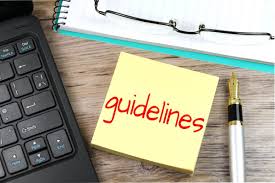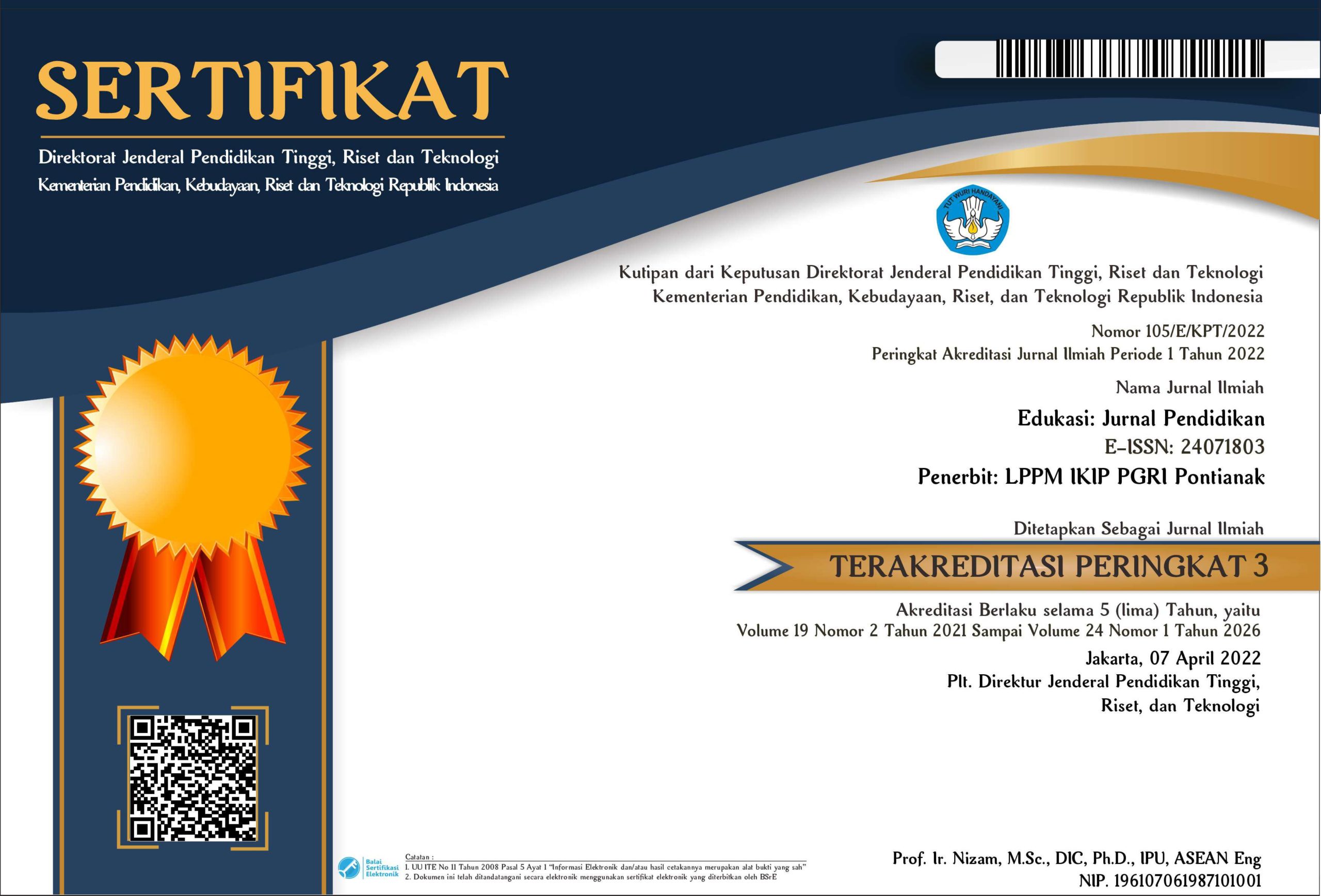- e-ISSN (2407-1803)
- p-ISSN (1829-8702)
- IKIP PGRI Pontianak
- LPPM IKIP PGRI Pontianak
- BIMA
- FORLAP
- SINTA
- ARJUNA
- Relawan Jurnal Indonesia
Submissions
Submission Preparation Checklist
As part of the submission process, authors are required to check off their submission's compliance with all of the following items, and submissions may be returned to authors that do not adhere to these guidelines.Copyright Notice
Authors who publish in this journal agree to the following terms:
- Authors retain copyright and grant the journal the right of first publication with the work simultaneously licensed under a Creative Commons Attribution License (CC-BY-NC) that allows others to share the work with an acknowledgment of the work's authorship and initial publication in this journal.
- Authors are able to enter into separate, additional contractual arrangements for the non-exclusive distribution of the journal's published version of the work (e.g., post it to an institutional repository or publish it in a book), with an acknowledgment of its initial publication in this journal.
- Authors are permitted and encouraged to post their work online (e.g., in institutional repositories or on their website) prior to and during the submission process, as it can lead to productive exchanges, as well as earlier and greater citation of published work.
Privacy Statement
The names and email addresses entered in this journal site will be used exclusively for the stated purposes of this journal and will not be made available for any other purpose or to any other party.
Â
The articles published in Edukasi: Jurnal Pendidikan is scientifically proven, and follow the code of ethics in scientific publication. The code of ethics itself upholds three values of ethics in publications, namely, (1) Neutrality (free from conflicts of interest in public management). (2) Justice (giving the right of authorship to the beneficiary as the author). (3) Honesty (free from duplication, fabrication, falsification, and plagiarism (DF2P) in the publication. The articles published also follow certain procedures or orders, such as blind review and revision processes that are consistent with the journal’s regular review, to ensure that the quality is maintained properly.















